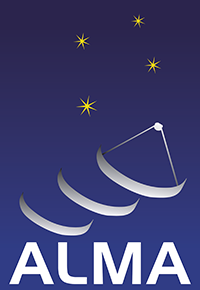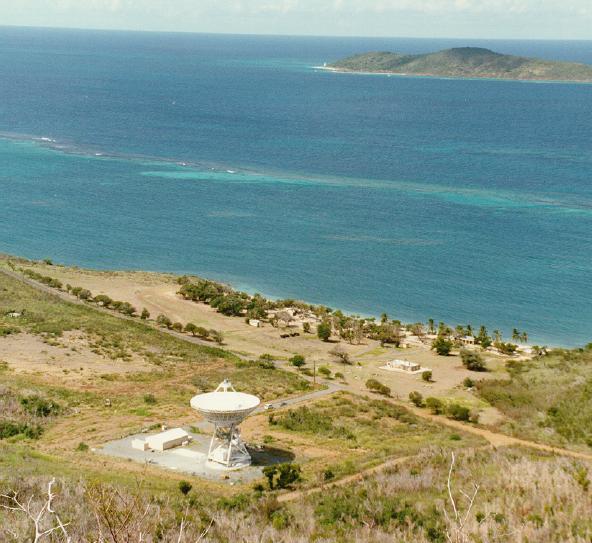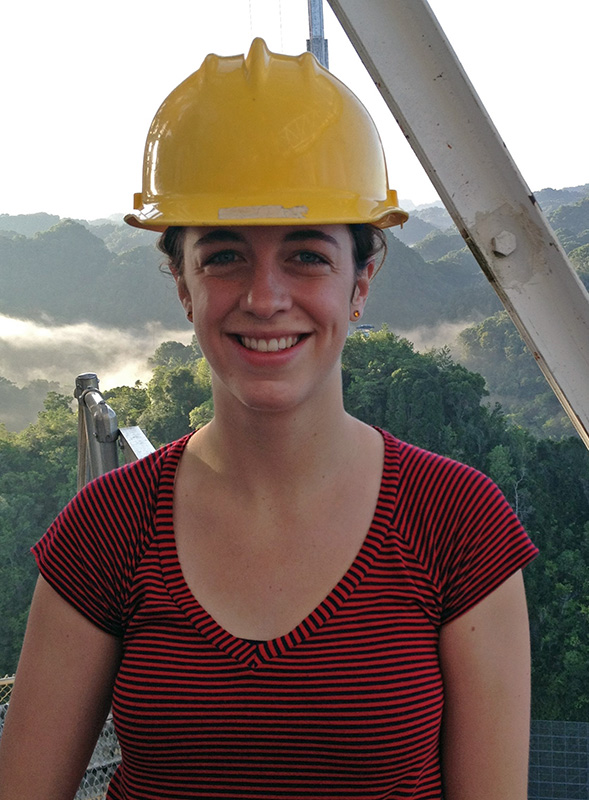NRAO eNews
Volume 11, Issue 4
5 April 2018
Upcoming Events

Synthesis Imaging Workshop
May 16 - 23, 2018 | Socorro, NM

NRAO/LBO Community Day at U. Toronto
Jun 4 - 5, 2018 | Toronto, Canada

NESS Meeting-in-a-Meeting
Jun 5 - 6, 2018 | Denver, CO

Astrophysical Frontiers in the Next Decade and Beyond
Jun 26 - 29, 2018 | Portland, OR

Tracing the Flow: Galactic Environments and the Formation of Massive Stars
Jul 2 - 6, 2018 | Lake Windermere, UK

IAU Division B Meeting
Aug 27, 2018 | Vienna, Austria
ALMA Cycle 6 Call for Proposals

The ALMA Director, on behalf of the Joint ALMA Observatory and the partner organizations in East Asia, Europe, and North America, is pleased to announce the ALMA Cycle 6 Call for Proposals for scientific observations is open.
ALMA Cycle 6 is currently scheduled from October 2018 to September 2019. Investigators of any professional background, nationality or affiliation are invited to submit proposals before the deadline of 15:00 UT on Thursday 19 April 2018.
X-Proposal Expression of Interest Pre-Announcement
The National Radio Astronomy Observatory (NRAO), Long Baseline Observatory, and Green Bank Observatory plan to invite submissions of brief Expressions of Interest (EoI) in PI-led “eXtra Large Proposals” (X-Proposals) for the Very Large Array (VLA), Very Long Baseline Array, and Green Bank Telescope requiring 1000 hours or more of telescope time, and running over multiple semesters (and possibly multiple VLA configurations).
X-Proposals are expected to be resourced by the proposing team. Projects should have extraordinary scientific merit and community legacy value, and will be expected to specify why the science goals cannot be achieved through the standard Science Review Panel / Telescope Allocation Committee process.
Responses will be used to gauge the level of community interest in such proposals, and their scientific potential. The observatories may not proceed to a Call for X-Proposals if, for example, there is judged to be insufficient community interest, scientific merit, or differentiation from Large Proposals.
The call for submission of EoIs is expected to be issued on 1 June 2018 with a deadline of 11 July 2018.
See the 2016 and 2017 NRAO User Committee reports for further background.
ALMA Program News
The Cycle 6 Call for Proposals is now available worldwide via the ALMA Science Portal worldwide (see article above). Submit your Cycle 6 ALMA proposals prior to the 15:00 UT deadline on Thursday 19 April 2018. In preparation for the Cycle 6 Call for Proposals, the newly-minted 2018 ALMA Ambassadors have organized a series of proposal preparation events around the world, as described in last month’s eNews.
In Cycle 5 science operations, ALMA returned to normal Principal Investigator (PI) observing after the February 2018 engineering period ended. Fifty fully operational Band 5 receivers are installed on antennas at the Array Operations Site and full PI observations have begun in this new ALMA Band. ALMA PI observations finished March 2018 in configuration C43-4. The array moves to C43-3 (1”.4 beam at 100 GHz, 15m to ~0.5km baselines) in early April. The configuration will then continue shrinking to more compact configurations over the next few months.
The ALMA Board will meet at the Operations Support Facility in northern Chile the second week of April 2018.
A conference titled Cosmic Cycle of Dust and Gas in our Galaxy: From Old to Young Star’ will be held 9-13 July 2018, in Quy Nhon, Vietnam.
ngVLA Program News

ngVLA Science Book
The ngVLA science case volume is in preparation and is a major deliverable to the Astronomy 2020 Decadal Survey. This science volume is being crafted by the ngVLA Science Advisory Council, in consultation with the astronomical community at large, and the ngVLA Project Scientist. The volume will provide an extremely useful summary of the ngVLA Key Science Mission for Astro 2020 panel members, as well as demonstrate the Project's firm handle on the associated technology requirements and cost, and will be published in the Astronomical Society of the Pacific monograph series. This will ensure that the book and individual chapters will be listed in the SAO/NASA Astrophysics Data System for maximum visibility to the Astro 2020 panel members.
Astrophysical Frontiers in the Next Decade and Beyond
26 – 29 June 2018 | Portland, Oregon
Registration and abstract submission is open for Astrophysical Frontiers in the Next Decade and Beyond: Planets, Galaxies, Black Holes, and the Transient Universe. This ambitious conference will bring together a large cross-section of the multi-wavelength astronomical community to discuss how best to tackle the most pressing astrophysical questions in the near-future. This conference will consist of plenary sessions of invited speakers and three parallel sessions that will include invited and contributed presentations covering Origins of Exoplanets and Protoplanetary Disks; Mechanisms of Galaxy Evolution; and Black Holes and Transient Phenomena. While this meeting is sponsored by NRAO, the science areas explored are truly multi-wavelength/messenger, and the science program has strong representation from communities across the electromagnetic spectrum. We hope to see you in Portland in June!
The abstract deadline has been extended to Friday, 6 April.
Career Opportunities
The ngVLA Project is interviewing candidates for a:
The application deadline for these positions is 15 April 2018.
Community-Driven Activities
Given the success of our first round of ngVLA Community Studies, a second round was initiated to tackle some of the most pressing questions unveiled by the initial studies. The primary objective for the second round of community studies is to further develop the Key Science Goals outlined in Memo #19. Studies and simulations were asked to focus on addressing these key science goals, and better quantifying the expected performance of the array while providing additional supporting technical requirements.
The second call yielded 12 approved scientific studies. All accepted Community Studies efforts from this second round are expected to write up their findings as part of a peer-refereed journal article or ngVLA memo, and present their progress/final results at the Astrophysical Frontiers in the next Decade and Beyond conference, 26-29 June 2018 in Portland, Oregon.
VLBA St. Croix Antenna Returns to Service

VLBA antenna at St. Croix
[click to enlarge]
In September 2017, two powerful hurricanes, Irma and Maria, swept through the Caribbean, wreaking havoc on island infrastructure, including the site of the Very Long Baseline Array (VLBA) antenna on the eastern tip of the island of St. Croix, U.S. Virgin Islands. The VLBA antenna structure was not substantially affected, however it is left needing significant corrosion repair and painting. Less severe problems included destruction of the dichroic panel allowing dual-band observing, damage to the subreflector motor flex shaft, and rusting of some motors. Impact to the site includes damage to the weather station, water intrusion into the control building, and destruction of the fence and gate. The site was without power and telephone service for about three months and was without Internet for five months.
We are happy to report that the St. Croix antenna returned to science observing on 10 March 2018. Correct functionality of the antenna was demonstrated when interferometric fringes were achieved on 20 March 2018. We expect two more major maintenance and repair visits to St. Croix this year to fully restore the antenna's integrity. Let’s hope the 2018 hurricane season causes less trouble!
The Late Evolution of a Massive Red Supergiant
What happens to red supergiants before they explode as supernovae? Using the powerful Jansky Very Large Array (VLA) and the Atacama Large Millimeter/submillimeter Array (ALMA), an international team of astronomers has recently looked for an answer to this question by observing the supergiant star VY Canis Majoris, one of the largest and most luminous stars known in the Milky Way.
Stars shine using the energy gained by nuclear fusion in their core. Near the end of their lifetime, stars like the Sun (with masses up to a few solar masses) expand and become red giants, with diameters more than 100 times the Sun. As a red giant, the star begins to lose mass to the surrounding space in the form of condensing dust, as a slow “wind”, driven by the large pressure of the radiation from the stellar surface. Stars that are much more massive than the Sun – e.g., 10 – 20X as massive – expand into a red supergiant. If such a red supergiant were placed at the center of the Solar System, the surface of the star itself would be beyond the orbit of Saturn, more than 6.6 astronomical units. Given the large physical size of the star, it has been thought that it would be very difficult for red supergiants to generate intense magnetic fields.
Recently, however, an international team led by Professor Hiroko Shinnaga from Kagoshima University has successfully measured a very strong magnetic field associated with the extreme red supergiant, VY Canis Majoris. This 25 M⊙ star is near the end of its life and is expected to explode soon (on astronomical time scales) as a core-collapse supernova. Given the extreme mass and rate of mass-loss, this star could become a supernova at any time. (It may have already exploded, but as it is 3700 light-years from Earth, we may not know it yet.)
After their careful analysis of VLA data acquired ~16 years ago, the team identified evidence of a very intense magnetic field generated by the red supergiant. The evidence was found in polarization data of emission lines from the molecule silicon monoxide (SiO). “Both linear and circular polarization signatures were detected from the molecule, arising in the circumstellar envelope (CSE) just above the surface of the star,” said Professor Shinnaga. “When I saw the typical circular polarization pattern of Zeeman splitting of the molecule, I was thrilled. I became quite certain that this star is truly remarkable, since the Zeeman phenomenon can only be explained by a very strong magnetic field, up to 150 - 650 Gauss, between 20 and 80 stellar radii.” ALMA data helped in identifying the location of the star within the circumstellar envelope. Converting the field strength at the stellar position, depending on how the magnetic field is aligned, the surface field of the star could be 50,000 Gauss. For comparison, the Sun’s surface magnetic field is of order 1 Gauss. Professor Shinnaga continued, “Future VLA and ALMA observations will further constrain the magnetic field strength, taking advantage of finer frequency resolution, wider bandwidths, and the large collecting area of the telescopes.”
Although the final fate of such a massive red supergiant is expected to be a supernova, the path it takes to get there is still uncertain. Complex dust and gas structures are found in the circumstellar envelope, because of the very high mass-loss rate. Using radio waves, the team can peer through the thick circumstellar envelope and reveal the activity of the star itself; the new result of very strong magnetic fields is likely the key to explaining the extreme nature of the massive star and could be a vital link in explaining the star's evolution to becoming a supernova.

The international team examined and analyzed the VLA data while Professor Shinnaga was on sabbatical from Kagoshima University during the summer and fall of 2016 at NRAO-Socorro, under the auspices of the NRAO Visiting Scientist program, and worked with many members of the scientific, engineering, and software staff while she was in residence. She visited Socorro with her two young daughters and the family became integrated into the close-knit community. Professor Shinnaga said, “My daughters found their best friends in Socorro, and we all really enjoyed the visit in Socorro. I will never forget the professionalism and the hospitality of the NRAO staff.”
Reference
Shinnaga et al. 2017, PASJ, 69, L10.
Claire Murray Receives Bob Brown Dissertation Award

The 2017 Robert L. Brown Outstanding Doctoral Dissertation Award has been given to Claire Murray (Space Telescope Science Institute) for her extraordinarily detailed observations of the thermodynamic state of neutral gas in the interstellar medium (ISM), which she describes in her dissertation, "Unveiling the Diffuse, Neutral Interstellar Medium: Absorption Spectroscopy of Galactic Hydrogen." Murray’s observations along 57 different sight-lines, her painstaking data analyses, and especially the new scientific results derived from her analyses were remarkable. Her work using the Karl G. Jansky Very Large Array, complemented by the Arecibo radio/radar telescope, has provided important new insights into the present state of the ISM and revitalized a major field of study in galactic structure. Additionally, Murray’s work establishes a solid factual foundation for probing the complex dynamics of the ISM.
Claire Murray received her M.S. (2013) and Ph.D. (2017) in astronomy from the University of Wisconsin; she graduated from Carleton College in Northfield, Minnesota, with a BA in physics in 2011. In 2010 Claire was a National Science Foundation (NSF) Research Experiences for Undergraduates (REU) student at the National Radio Astronomy Observatory (NRAO) in Socorro, New Mexico, where she and Lorant Sjouwerman discovered the first methanol maser in M31, the Andromeda Galaxy. She is currently a postdoctoral fellow at the Space Telescope Science Institute, where she is expanding her dissertation work to study the interplay between neutral gas and dust in the Milky Way and the nearby Magellanic System to aid cosmological experiments by quantifying galactic dust foregrounds with high precision and to resolve the multidimensional gas flows governing the evolution of star-forming molecular clouds.
The Robert L. Brown Outstanding Doctoral Dissertation Award is administered by Associated Universities, Inc. (AUI), and NRAO on behalf of Bob Brown’s friends and family to honor his life and career. The award is given each year to a recent recipient of a doctoral degree, from any recognized degree-granting institution in the United States, that is substantially based on new observational data obtained at any AUI facility and is considered to be of an exceptionally high scientific standard. Applications for the 2018 award should be sent to rlbaward@nrao.edu no later than 31 December 2018.
Career Opportunities
ngVLA Calibration Research Associate: The NRAO invites applications for a next-generation VLA (ngVLA) Calibration Research Associate. The successful applicant will work within the ngVLA project team, within the ngVLA Science Support IPT, on detailed investigation of the calibration strategies and associated requirements for the ngVLA. The primary focus of this scientific research associate position will be contributing to a high‐level study that develops a calibration strategy for the array in order to understand any implications for the hardware system architecture.
ngVLA Science Community Support Research Associate: The NRAO invites applications for a next-generation VLA (ngVLA) Science Community Support Research Associate. The preferred duty station will be the NRAO Headquarters in Charlottesville, Virginia, but the Domenici Science Operations Center in Socorro, New Mexico may also be a possibility. The Research Associate will work with the ngVLA Project Scientist to facilitate and enable cutting-edge science by the community and to help define the ngVLA concept from a user’s perspective. The successful candidate will be an essential part of the ngVLA effort as the project prepares for the Astro 2020 Decadal Survey. The primary focus of this scientific research associate position will be to define the science operations concept for the facility and support community research to define the capabilities of the instrument.
From the Archives
Ellen Bouton

[click to enlarge]
About this month's photo: "I’ll meet you in your lab tomorrow, and we can get started!" The late Don Backer's comment to Rich Bradley when Backer was in Charlottesville to give the 2003 Jansky Lecture was the start of the Precision Array for Probing the Epoch of Reionization (PAPER). At their meeting, they decided to build portable dual-polarized elements, each equipped with a low noise receiver ensuring sky dominated noise, and planned to build a tiny, four-element linear array in Green Bank within the next few months. Over the winter of 2003-04, Rich Bradley and his team refined the antenna design and developed a low-noise amplifier to fit into a two-inch diameter cylinder located under the feed point of the antenna.
This summer 2004 photo shows the very first PAPER antenna being deployed in Green Bank near the 85-foot Tatel Telescope. Rich Bradley is kneeling, Dan Boyd is standing, and N. Biswas, a University of Virginia graduate student at the time, is under the antenna. Don Backer took the photo. PAPER has expanded over the years to 128 antennas in South Africa and evolved into the Hydrogen Epoch of Reionization Array (HERA), which is currently under construction there.
Thanks to Rich Bradley for caption information; for further information, see Rich's PAPER paper in the September 2017 URSI Science Bulletin.
From the Archives is an ongoing series illustrating NRAO and U.S. radio astronomy history via images selected from our collections of individuals' and institutional papers. If readers have images they believe would be of interest to the Archives, please contact Ellen Bouton.


